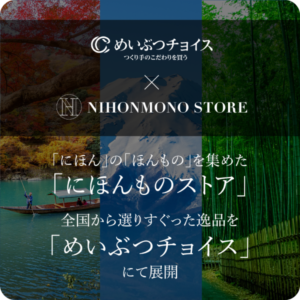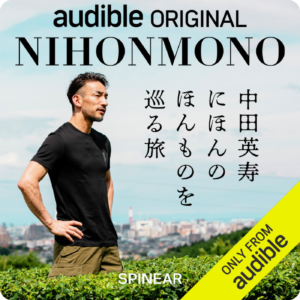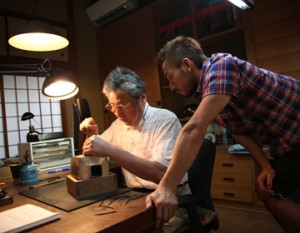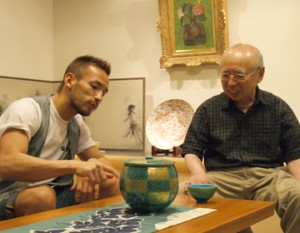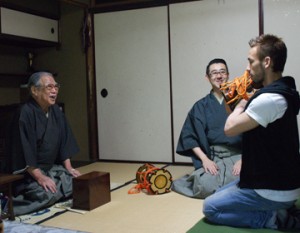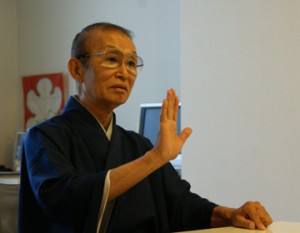Used at Nijo Castle and elsewhere, this paper does not fade and does not attract insects.
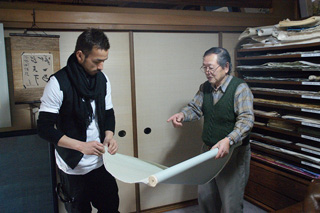
Washi made with mud is called Najio gampi paper. Because it is mixed with mud, it is strong, does not fade over time, and does not attract insects. Because of this, it was used for folding screens, fusuma (sliding screens), barriers, foil-encrusted paper, and in the past, for clan cards, etc. It was called “ma-ai-igami” (meaning “paper that fits together”) because it could be used for everything. Furthermore, it was valued by Korin Ogata and others in the Edo period (1603-1867), and in the Showa period (1926-1989), Ryuzaburo Umehara, a leading figure in the Japanese Western-style painting world, was a favorite user of this paper, as it offered good color when paints were applied to it and increased brilliance when gold leaf was applied……. Because it is such a precious paper, it is of course the preferred paper of shrines and temples. The paper made by Takenobu Tanino of Tanitoku Paper Mills, which we visited this time, has been used to restore many important cultural properties, including Nijo Castle, Nishi Honganji Temple, Katsura Imperial Villa, Nikko, and the Imperial Villa in Numazu. His paper is now said to be indispensable for the restoration of Japan’s national treasures.
Living National Treasure Made with Soil and Water from Nashio
Takenobu Tanino was designated a living national treasure in 2002. The area used to be known as a paper-making village and was called “Nashio Senken,” but now there are only two paper makers in the area that carry on the tradition. The other produces only foil-backed paper, so Mr. Tanino’s paper mill is the only one that produces all types of Nashio gampi-gami. In Nashio, unique mud of four different colors is extracted from a rather hard layer of bedrock. Once the mud is collected, it is placed in cotton bags and rubbed. Only the fine-grained mud thus obtained is mixed to produce paper of various colors. Normally, the mud would sink into the water, but when Nashio’s mountain water is used, the mud blends well with the water.

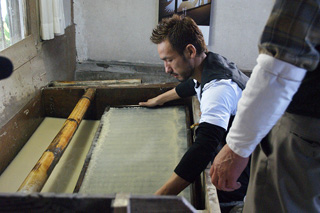
It takes a lot of skill.
This is the only place in Japan where mud is mixed into the paper, which is a rare process. Nakata also had a chance to try his hand at papermaking, but it is quite difficult to make paper with mud mixed in. It requires a great deal of skill. Nashio gampi-shi is a Japanese paper that is the pride of Japan and has even been presented to the Pope. It is the result of the unique mud and water of Nashio and the wisdom of its people. Nashio gampi-shi has the feel of the traditions nurtured through the symbiosis of nature and daily life.
